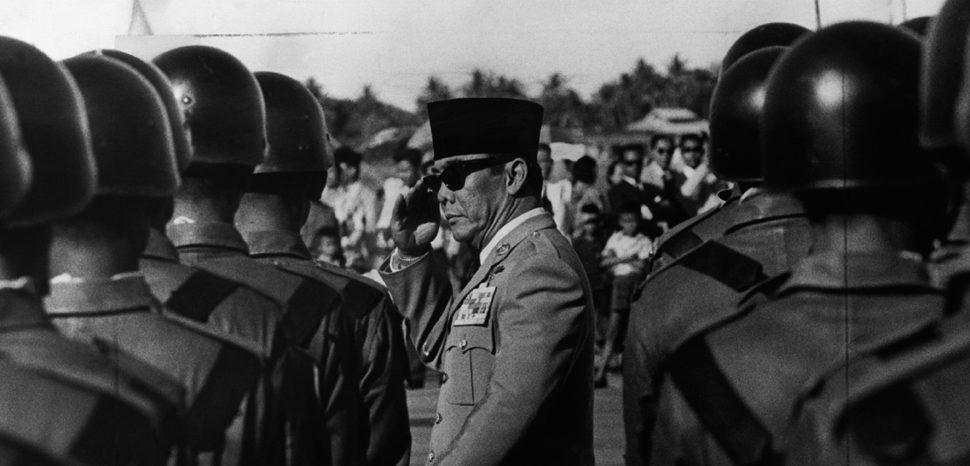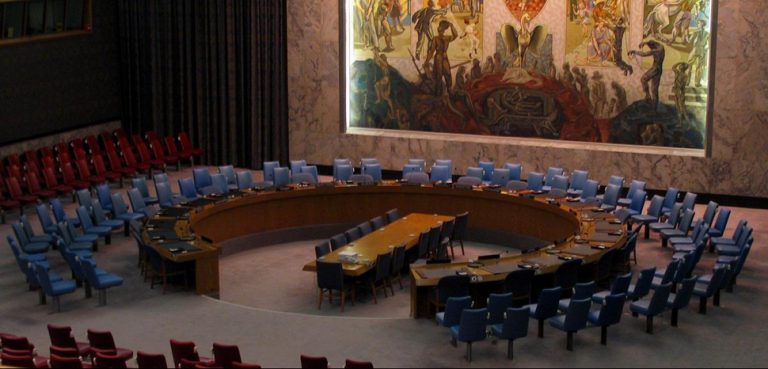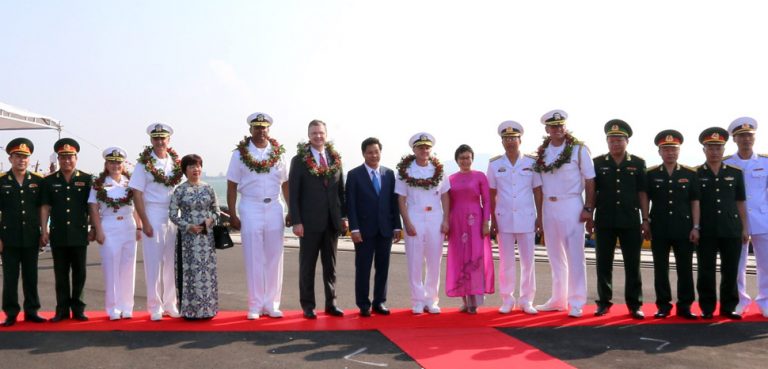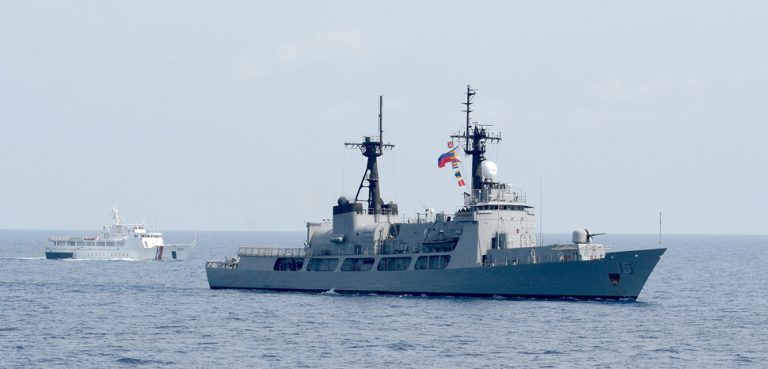The 1960s were critical years of the Cold War. These were the years that Nixon, who was Eishenshower’s vice president for 8 years between 1953-1961, introduced domino theory to US allies. At the same time, the US was struggling to win the Vietnam war, an actualization of this belief in domino theory.
The theoretical principle is simple: if Vietnam fell into the hands of the Communists (Soviet and Chinese), the ideology would inevitably spread to Indonesia, as well as other Southeast Asian countries, then Japan would lean to the left, which meant that the US would be “out” of Southeast Asia and Pacific, leaving Australia isolated. Thus, the 1960s, especially 1965 (when Nixon was a member of the Senate), were the peak years of tensions between US allies and the Soviet-Chinese bloc in Asia, and also the years of the split between Beijing and Moscow in the international left movement.
Sukarno, as the leader of the newly independent state, the Republic of Indonesia, tried to avoid the vortex of the Cold War by declaring a non-aligned movement. Yet Sukarno visited Washington, met with Nixon who was then vice president, made a speech at the American Congress, and introduced the Indonesia state and Indonesian values to the United States.
This brought a sense of relief – for a time. Sukarno was understood to not be a communist, and therefore was considered to be on the US side. His arrival added to US confidence in its initial view when recognizing Indonesia’s independence in 1949, that Indonesia would not fall into the Communist camp, thus allowing Dutch troops in Indonesia to be redeployed to Europe in order to strengthen the ranks of allies threatened by Moscow.
But a few weeks later, Sukarno flew to Moscow, then to Beijing, which flashed warning signs in Washington. The US government began to worry, because it seemed that Sukarno was warming to US enemies. Indonesia’s confidence in the West also began to deteriorate after a US pilot was shot down, revealing US involvement in several rebellions in Indonesia (one of them was PRRI in Sumatra)
Many US diplomats today consider this development as a major misstep by the US that strengthened Sukarno’s hostility to the West. The resulting tensions eased briefly after Kennedy was elected, but they heated up once again after Kennedy was assassinated. The rise of Lyndon Johnson as president meant the Vietnam war was getting more and more violent, marking an escalation in Cold War geopolitics.
Differences grew even thicker when Britain recognized and encouraged the formation of the Malaysian state, without inviting Sukarno to negotiate, which made Sukarno even more angry with the West.
Inevitably, the West was increasingly wary of Sukarno. Britain, feeling increasingly cornered, put Sukarno’s name as one of the priority names that had to be taken care of immediately. For this reason, as written by Paul Lashmar and James Oliver in the book Britain’s Secret Propaganda War 1948-77, the British sent Norman Reddaway, a diplomat as well as a propaganda expert, to Singapore to try to bring about the fall of Sukarno. In the atmosphere of the Cold War, such a move would have been very common. Reddaway later became a conduit for supplying beneficial information to various media sources, including pro-Suharto media, following the September 30 incident.
At the same time, there was growing antipathy toward the Vietnam War in Indonesia. Demonstrations in front of the US embassy were constant, and hatred toward Britain gradually turned into hatred towards the United States. The US thus turned into the number one enemy in Indonesia. Of course, this was helped by Cold War propaganda fed into Indonesia by US adversaries, which continued to fuel the hatred.
But at the domestic level, no one really knows what really happened that fateful night, September 30 1965. The political configuration that positioned Sukarno on two antagonistic pillars – the Indonesian Communist Party/PKI and the military – opens up many possible interpretations. A tipping point that put the power triangle in motion might have been Sukarno fainting during one of his speeches, which opened up speculation about what would happen if Sukarno were to pass away. It was clear that, without Sukarno, his two major political supporters would clash against each other for the right to rule.
In such a configuration, there will always be justification for positioning one party as the primary actor, because the three parties were indeed in a dynamic position between maintaining and expanding their respective influence.
For example, Colonel Latief admitted that he had briefly informed Suharto about the plan for the “September 30 Movement” (Gerakan 30 September), but only in the initial mission to bring the Council of Generals (Dewan Jenderal), who had previously been rumoured to collaborate with US, to the presidential palace, before Soekarno. But Suharto did not budge at that time.
In light of this admission, there are some parties who blame the blame in Suharto’s hands via omission, or his “knowing but not acting.” Meanwhile, there are some in the West who believe in a “a coup within a coup”; in other words, certain actors rode on the initial intentions of the September 30 Movement and then pursued another goal entirely. Other theories accuse the PKI, Suharto, the CIA, and even Sukarno himself.
Some analysts at the Pentagon have even indicated the possibility of Moscow being at fault because, according to them, Moscow had experience conducting such operations, complete with the necessary supplies and weapons needed for a coup. But in fact: it failed and was ineffective. These analysts did not provide a description of how and what the model of Beijing’s involvement would look like, even though at that time Beijing and Moscow were not on the same side anymore, while some parties in Indonesia believed Aidit (Chief of PKI) and his party were no longer in the Moscow camp, but were already in Beijing’s orbit. Meanwhile, some parties also doubted that Suharto was able to carry out such a systematic operation given that his position was not too high, thus limiting the global extent of his network.
Despite these uncertainties, it must be admitted that, after the September 30, 1965 incident, geopolitically, the US and its allies were the primary beneficiaries. In the Cold War context, the emergence of Suharto, who was not beholden to the Communist movement, in the eyes of US and Britain, would certainly be considered a major victory and would continue to help Suharto to inflame anti-Communist sentiment.
So it is undeniable that there were many aid flows after the September 30 1965 incident to Suharto’s camp, both from Australia, the United States, and Britain, because in the end Suharto was the one who won the Cold War in Indonesia; Suharto was clearly not part of the PKI, because it was a “strategic ally.” Such aid not only helped establish Suharto’s New Order regime, but also deflated Sukarno’s power by keeping the PKI marginalized.
In this way, for US and its allies, Suharto was a symbol of US’s initial victory in the Cold War in Southeast Asia, which the US could only fully achieve at the global level 20s years later, in 1989 when the USSR collapsed. The problem to this day is the large number of casualties from the incident, as a result of the cleansing action by the Suharto regime, which in fact most of the people at the lower levels did not “know about.” The figure to this day is not certain, but the range is very frightening: 500,000 to 3 million deaths. Some of them were victims who died at the hands of their fellow nationals.
Will Indonesia be one of the key countries again when the US and China are caught in a second Cold War? Let’s see.
The views expressed in this article are those of the authors alone and do not necessarily reflect those of Geopoliticalmonitor.com




